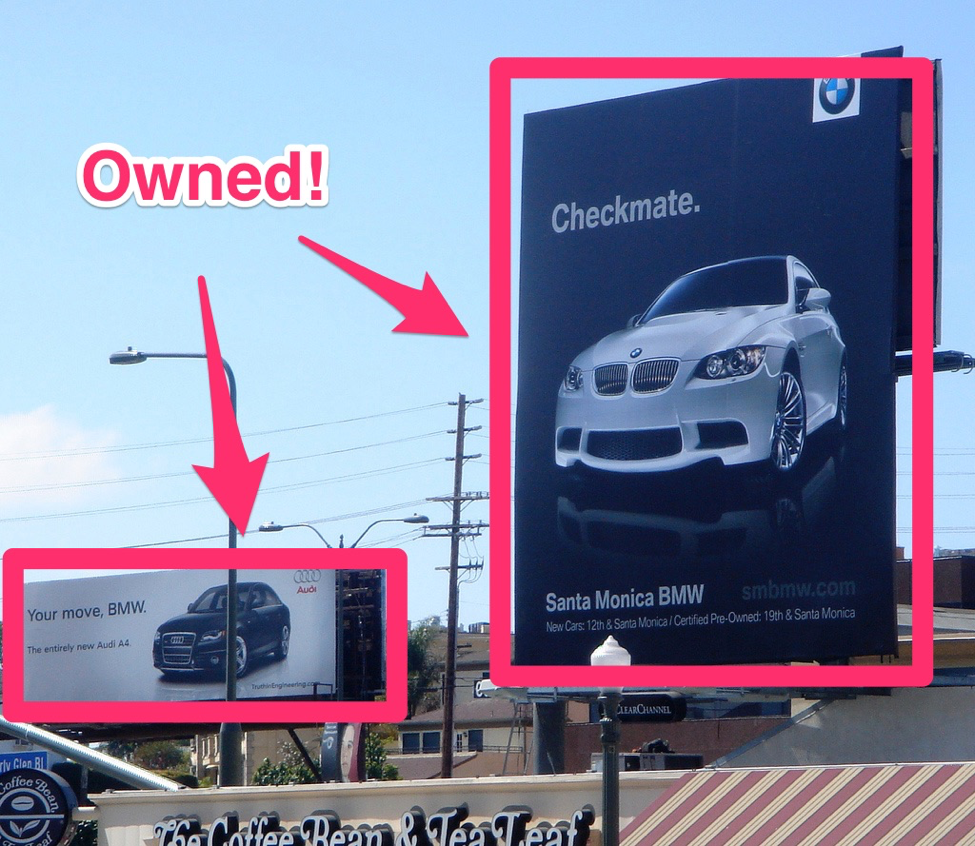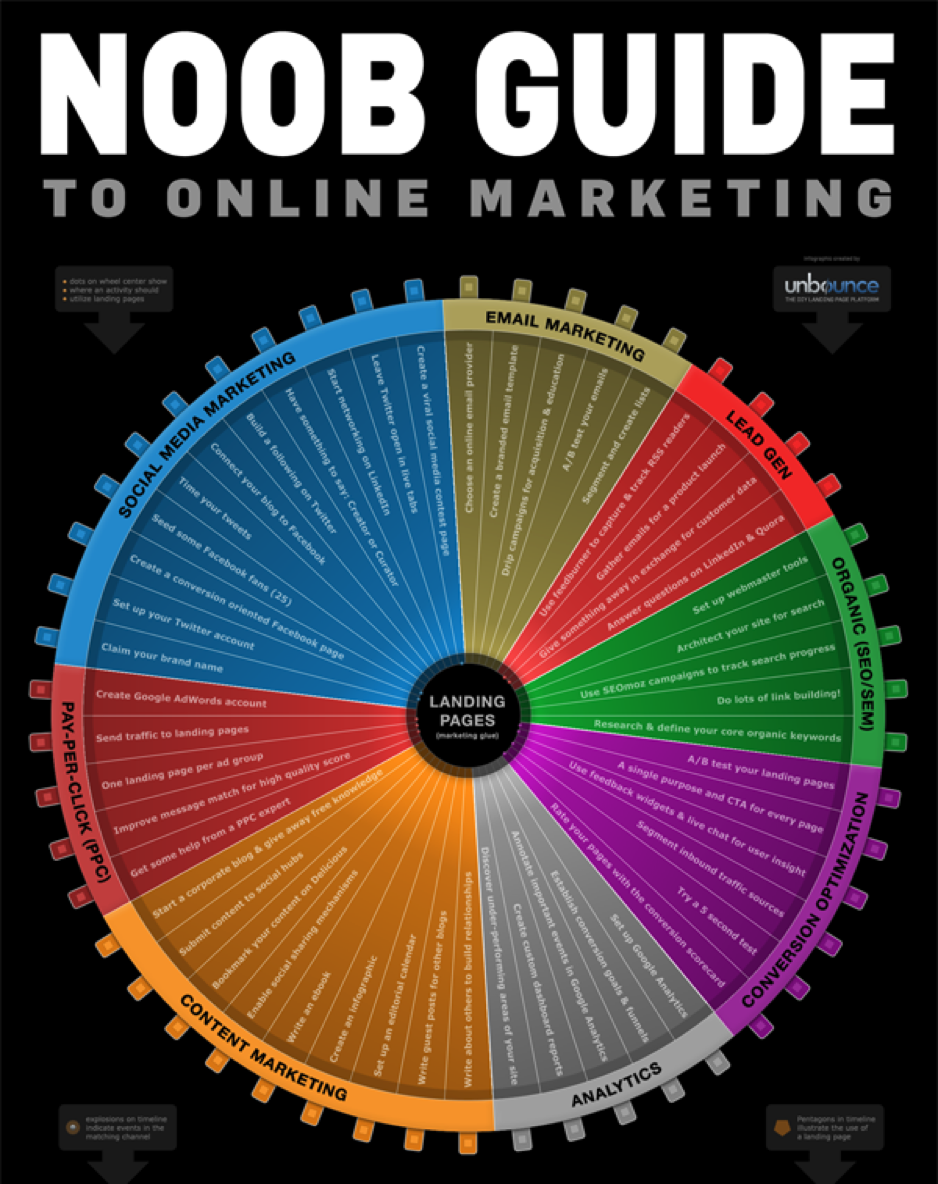Digital marketing. Just another one of those new, fancy buzzwords you should use to sound smart in meetings or is it the real deal?
Maybe a better question is: what is digital marketing?
This digital marketing guide will show you what’s what.
First popularized as a term in the early 2000’s, digital marketing has actually been around much longer.
Like, WAY longer. About 100 years longer, to be exact.
Here’s a pic of the first digital marketer in history:

(Image source: Wikipedia)
His name: Guglielmo Marconi.
What? Marconi?
Yup. In 1896 he was the first human to demonstrate a, “public transmission of wireless signals.”
This dude invented the radio.
Shortly after his little demonstration in England, morse signals were transmitted across open water.
And, while it would take another 10 years for the radio to reach the general public, it sure didn’t take the creators long to realize they could use it to sell stuff.
The first live broadcast was from an opera performance at the Met and guess what people did after it?
They bought show tickets!
Digital marketing strategy was born.
I bet you’re surprised. I didn’t mention smartphones, apps, Facebook ads or blogs at all.
That’s because digital marketing has nothing to do with the internet.
Definition
If you are wondering what digital marketing is… it’s is advertising delivered through digital channels. Channels such as social media, mobile applications, email, web applications, search engines, websites, or any new digital channel.
Or a simpler version…
Digital marketing is any form of marketing products or services that involves electronic devices.
That’s the reason it has been around for decades (because electronics have) and why it doesn’t necessarily have anything to do with content marketing, Google ads, social media or retargeting.
Digital marketing can be done both online and offline.
And, both kinds matter for a well-rounded digital marketing strategy.
Why digital marketing matters
Remember billboards?
I do.
As a young kid in California, my experiences from the back seat of our car mostly alternated between: “Mom, when are we there?” and “Uh, look, McDonalds, can we go?”, whenever one of those 10 foot billboards popped up on the side of the road.
Growing up with Indian parents, the answer to both of those would, most times, be the same: “Not yet.”
Sometimes, big brands would even start a billboard war, like this one between Audi and BMW, which got quite a few laughs:

(Image source: BMW blog)
In 2015, a ton of my clients still spent hundreds of millions of dollars on billboard advertising.
Unfortunately or fortunately, it’s dead.
The reason why billboards, like the ones above, die, is perfectly illustrated in a single picture of a Volvo.
Because, frankly, the future of driving will look like this:

(Image source: Dullonet)
Not a single passenger will spend their time looking at the road.
Do me a favor, the next time you drive and are giving a friend a ride, take a peek at the passenger seat.
Just for a second.
Even now, chances are they’ll be looking at their phone.
Heck, in a world where 9% of all drivers are on the phone one way or the other (texting or calling), at any given moment during daylight hours, how can we think billboards have a future?
If not even the driver is looking at the road any more, who’s supposed to see those advertisements?
And, that’s not even considering self-driving cars, on which both Apple and Google are working (you know it’s going to happen).
Elon Musk suggests that they’ll be here around 2020. That’s in only a few years.
That means you don’t have much time to figure out this digital marketing stuff before you can power down your old school printing press and close up shop.
The share of people spending more time using electronic devices is only going up from here.
With Americans spending 11+ hours on electronic devices, every single day, there’s not much left. That is, until we spend ALL of our time in the digital world.
And, while yes, online marketing is the reason that 25 year olds can now sit in their living room and earn 2 million dollars a year playing video games, offline marketing still has its place.
Let’s take a helicopter and circle around to get an overview.
Overview
The 2 main pillars of digital marketing are online marketing and offline marketing. That said, since I’ll talk about online marketing in a separate guide, I’ll only mention the different areas of online marketing here, for the sake of completeness.
The 7 big categories of online marketing are:
- Search engine optimization (SEO)
- Search engine marketing (SEM)
- Content marketing
- Social Media Marketing (SMM)
- Pay-per-click advertising (PPC)
- Affiliate marketing
- Email marketing
Unbounce created a great infographic that sums up all kinds of online marketing in one neat chart.

(Image source: Unbounce)
The beginner’s guide to online marketing, on Quick Sprout, is a great place to get started.
Okay, that said, what other digital marketing is there? There’s plenty, actually.
Here are the 4 big categories of digital offline marketing.
First, there’s what I call enhanced offline marketing. This is a form of marketing that is entirely offline, but enhanced with electronic devices.
For example, if your restaurant uses iPads for your customers to create their orders on, then the offline experience of say, eating Thai food, is enhanced with this electronic device.
People have been using digital media to enhance their marketing for decades (you’ve only forgotten in what ways, as you’ll see).

(Image source: San Diego Tribune)
Next, there’s radio marketing. The next time you hear an annoying, over-enthusiastic car dealer shout every word of his or her commercial, thank Mr. Marconi.
Of course, we can’t forget television marketing. TV ads have been around for more than half a century (and since 1953 also in color, nationwide – Yes, there was a time before color TV).
